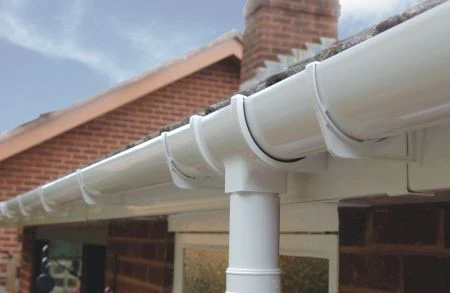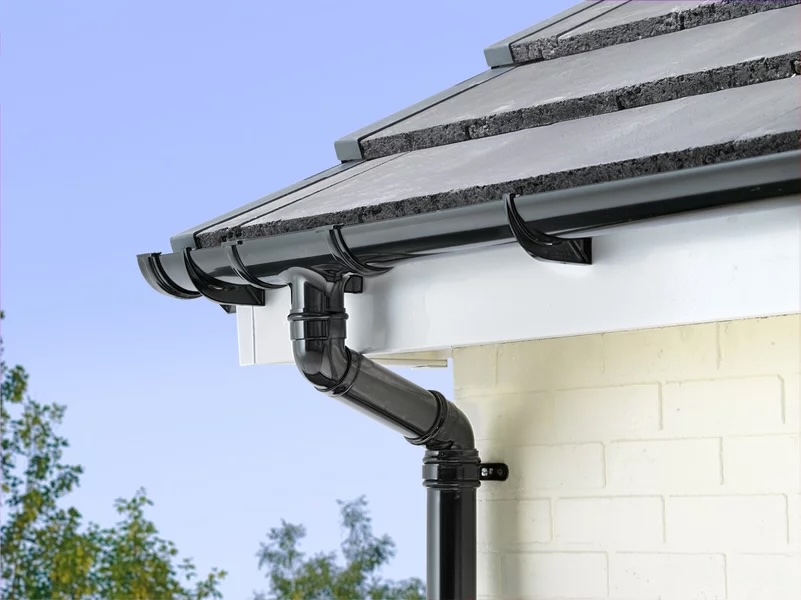Five Killer Quora Answers On Replacing Guttering And Downpipes
페이지 정보
작성자 Bryon 작성일25-01-11 20:01 조회3회 댓글0건관련링크
본문
 The Importance of Replacing Guttering and Downpipes
The Importance of Replacing Guttering and DownpipesThe right guttering and downpipes channel rainwater away from your home to avoid flooding soil erosion, foundation damage and the growth of mould. Regular maintenance ensures that they are free of clogs and functioning efficiently.
 Sizing your downpipes to match the roof size is essential to ensure proper drainage of water. This eliminates bottlenecks to ensure optimal performance.
Sizing your downpipes to match the roof size is essential to ensure proper drainage of water. This eliminates bottlenecks to ensure optimal performance.Placement
Gutters are designed to drain and collect rainwater, but if they're damaged or poorly positioned, water can flow down the sides of the house and get into the walls and foundations. This can result in structural damage, soil erosiveness and flooding, as well as damp crawlspaces and basements. Proper guttering and downpipe installation is vital to avoid this, and is often controlled by building regulations.
Downpipes are drainage pipes that connect to the spouting system or guttering. They channel rainwater and melting snow (in cold climates) away from your house using gravity. They protect walls and foundations from water damage and also stop the rotting of fascia boards and leaks.
A proper downpipe size is crucial to a gutter system's efficiency as over-sized downpipes may cause overflowing and if placed too close to a home can increase the risk of flooding. The ideal downpipe size depends on roof size and pitch, and a common rule of thumb is to have one downpipe repairs for every 9m (30ft) of guttering.
There are a variety of downpipe materials available including plastic, metal and vinyl. Metal options like galvanised steel or aluminium provide strength, corrosion resistance, and long-lasting durability under all weather conditions. Plastics like PVC or vinyl are lightweight and cost-effective. They're also easy to install. However, they could be vulnerable to UV degradation in harsh sunlight.
After the downpipes and gutters are installed, seal them together with high-quality siliconeized caulking. This will ensure that the joint is water-proof and that any screws or rivets are properly sealed so that water cannot get in. Caulking should also be applied to seams, endcaps and downpipe outlets to stop leaks.
Materials
Gutters and downpipes must be in a good condition to ensure that water flows effectively. To avoid blockages, flooding or foundation damage, as well as costly repairs, it is essential to keep them clean and maintained regularly.
Before starting, ensure you have the proper items for your gutter replacement project - this includes the gutters themselves, hangers, downpipes, connectors, sealant and screws. It's also important to plan your installation meticulously and always work safely. This will include setting up a stable ladder and taking appropriate safety precautions, such as personal protective equipment (PPE).
If you're installing new guttering mark out the position of the downpipe opening on the wall of your home with a pencil. Then measure the length of your guttering to determine how long you have to cut.
Leave a small amount of extra length after cutting the Guttering repairs near me prices to allow for expansion lines and click-fit fittings. After cutting the guttering, you can use a metal file to eliminate any burrs. Make sure to spray silicone lubricant onto the connectors prior to installing them.
Gutter hangers support the weight of your gutters, so it's crucial to replace them when they're damaged or corroded. They are usually attached to the fascia board and can be fixed with pop rivets or sheet-metal screws. You must also replace gutter downpipe gutter brackets and ties.
Downpipes are used to transport rainwater off your roof and then drain it away from your property. They can reduce the possibility of flooding in basements soil erosion, water seepage into crawlspaces wood rot, siding and mould growth and damage to masonry. A properly functioning downpipe drainage can also help to protect the roof by reducing the stress on the structure and stopping overflow.
While you can undertake some repairs and maintenance on your downpipe by yourself, a professional may be required to address more serious issues, such as clogged or damaged pipes that won't clear with flushing, or leaks that are caused by crushed spots or gaps. Qualified gutter contractors have access equipment, tools and expertise to thoroughly inspect, troubleshoot and fix downpipe problems. They are also capable of replacing guttering and downpipes in the proper sizes and types to ensure the best functionality.
Installation
Downpipes ensure that the water coming off your roof is properly removed. Without them, your guttering could overflow or result in excess moisture, leading to various issues for your home, including landscaping damage as well as flooding of crawl spaces and basements as well as structural damage to the home and growth of mould.
When choosing your downpipes, it is best to select high-quality materials to ensure they are able to drain away the rainwater efficiently. It is also important to select the appropriate size of downpipes for your house depending on the amount of rainwater you need to divert as well as the surface area of your roof. There are a range of sizes and styles available to fit any house, from round downpipes that provide a classic look to square ones that are suitable for both traditional and modern homes.
Once you have chosen your downpipes, they need to be put on the wall of your house. This task can be accomplished by yourself, or by hiring a professional gutter installation company. If you choose to do it yourself mark the location of each downpipe by drawing a line vertically. This will help keep them straight and ensure they are positioned where they need to be. After this, attach the brackets to the downpipes. They should be placed at the end of each downpipe in order to stop them from shifting in time, particularly if the eaves is low.
It is an excellent idea to install downpipe extensions in the gutters if there is lots of rainwater to divert in order to ensure that the water gets exactly where it needs to go. If your downpipes and gutters are not properly placed they could result in standing water that can cause erosion in your yard or cracks in the foundation.
Once the downpipes are in place, it is important to check for any leaks or gaps. These should be caulked to stop water from getting into your home. Also, you should apply caulk to the joint and end caps of the downpipes in order to ensure they are watertight.
Maintenance
Guttering and downpipes form an integral part of a house. They aid in managing the water flow and direct it away from important areas like doorways, porches, and garden beds. They protect the roof from water damage as well as the foundations. As time passes drainpipes and gutters can become clogged up with debris and become less effective in their duties. A well-designed guttering system that is regularly maintained and cleaned helps to keep this from happening.
Gutter maintenance should be performed each year to ensure the gutters are functioning correctly. This includes inspecting and fixing downpipes in order to ensure they are not blocked, checking the gutters and their brackets for leaks or cracks, as well as making sure that all brackets are correctly aligned. If the guttering have shifted, the correct method for re-aligning should be followed to avoid additional problems.
The downpipes are a crucial part of the guttering system, assisting to disperse rainwater from the roof. They are placed in the gutter run and should be set at least a metre from the house in order to drain water away from important areas. It is best to keep the distance between downpipes and the house as wide as possible. This will lower the chance of leaks.
Downpipes can be blocked by wet leaves, moss, and other debris that accumulates over time. Regular cleaning, and the use of drain unblockers, can help to keep your drains free. You can purchase downpipe connectors that are designed to fit inside your downpipes and assist in preventing blockages.
It is also worth considering adding an outlet for your downpipe to your gutter system. This will direct the water to the new gulley or soakaway. To determine the correct positioning of the outlet for running or stop end outlet, hang a plumb-line from the facia, and place it directly over the drain location.
You can patch any holes that you discover in your gutters and downpipes repairs near me with roofing cement. The roofing cement should be sprayed on the inside of the gutter, and then smoothed. You can also use gutter sealants. These are best suited to iron guttering since they have an anti-rust coating to shield the material from moisture and other harmful elements.
Warning: Use of undefined constant php - assumed 'php' (this will throw an Error in a future version of PHP) in /data/www/kacu.hbni.co.kr/dev/skin/board/basic/view.skin.php on line 152
댓글목록
등록된 댓글이 없습니다.

